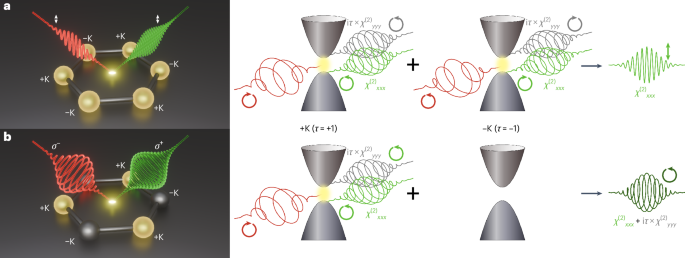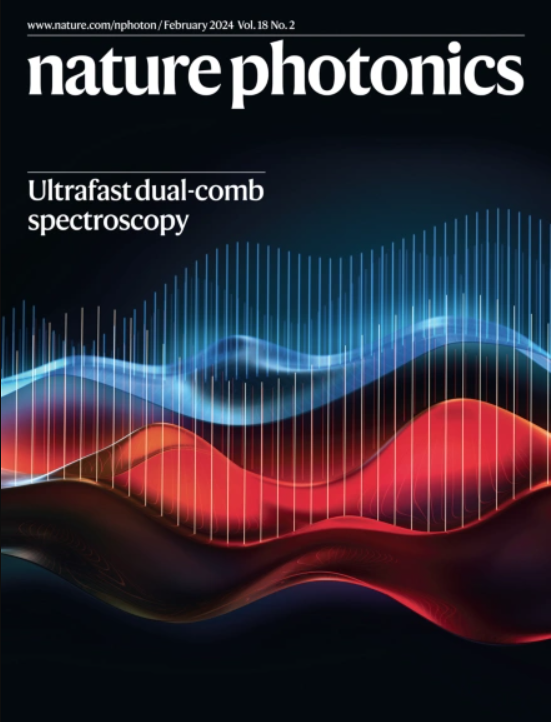Nonlinear valley selection rules and all-optical probe of broken time-reversal symmetry in monolayer WSe2
IF 32.3
1区 物理与天体物理
Q1 OPTICS
引用次数: 0
Abstract
In monolayer transition metal dichalcogenides, time-reversal symmetry—combined with broken space-inversion symmetry—defines the spin–valley degree of freedom. As such, the engineering and control of time-reversal symmetry by optical or magnetic fields constitutes the foundation of valleytronics. Here we propose a new approach for the detection of broken time-reversal symmetry and valley imbalance in monolayer WSe2 based on second-harmonic generation. At room temperature, our method can selectively probe a net valley imbalance generated by ultrafast, coherent and valley-exclusive optical Stark and Bloch–Siegert effects. This work demonstrates the potential and unique capabilities of nonlinear optics as a probe of broken time-reversal symmetry as well as a tool for ultrafast and non-destructive valleytronic operations. The feasibility of using second-harmonic generation to measure the broken time-reversal symmetry and valley polarization in monolayer WSe2 is presented, simplifying the process of probing valleys on ultrafast timescales without perturbing the system.


单层WSe2中非线性谷选择规则及破时反转对称性全光探头
在单层过渡金属二硫族化合物中,时间反转对称性与破缺空间反转对称性结合定义了自旋谷自由度。因此,光或磁场对时间反转对称性的工程和控制构成了谷电子学的基础。本文提出了一种基于二次谐波产生的检测单层WSe2中时间反转对称性破缺和谷不平衡的新方法。在室温下,我们的方法可以选择性地探测由超快、相干和谷独占光学Stark和Bloch-Siegert效应产生的净谷不平衡。这项工作展示了非线性光学作为破缺时间反转对称性探测的潜力和独特能力,以及超快和非破坏性谷电子操作的工具。
本文章由计算机程序翻译,如有差异,请以英文原文为准。
求助全文
约1分钟内获得全文
求助全文
来源期刊

Nature Photonics
物理-光学
CiteScore
54.20
自引率
1.70%
发文量
158
审稿时长
12 months
期刊介绍:
Nature Photonics is a monthly journal dedicated to the scientific study and application of light, known as Photonics. It publishes top-quality, peer-reviewed research across all areas of light generation, manipulation, and detection.
The journal encompasses research into the fundamental properties of light and its interactions with matter, as well as the latest developments in optoelectronic devices and emerging photonics applications. Topics covered include lasers, LEDs, imaging, detectors, optoelectronic devices, quantum optics, biophotonics, optical data storage, spectroscopy, fiber optics, solar energy, displays, terahertz technology, nonlinear optics, plasmonics, nanophotonics, and X-rays.
In addition to research papers and review articles summarizing scientific findings in optoelectronics, Nature Photonics also features News and Views pieces and research highlights. It uniquely includes articles on the business aspects of the industry, such as technology commercialization and market analysis, offering a comprehensive perspective on the field.
 求助内容:
求助内容: 应助结果提醒方式:
应助结果提醒方式:


